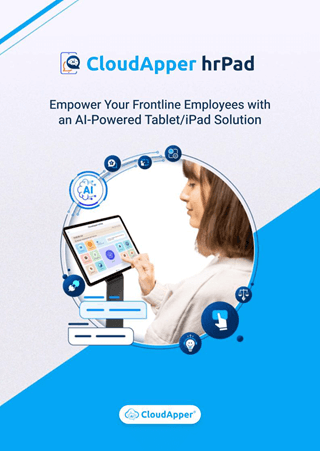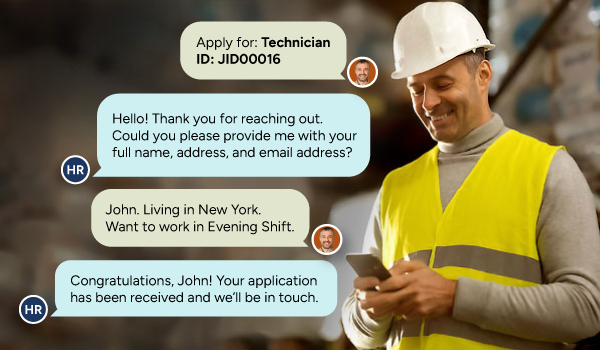Table of Contents
Let’s be honest: it’s frustrating when employees can’t quickly find the policies they need. Even more frustrating? Being told that the answer “lives in the dashboard” — only to find yourself opening PDF after PDF. If your company uses Workday, chances are you’ve built a library of Workday Policy Documents tucked away in custom dashboards. But here’s the catch — even if they’re organized beautifully, they’re not exactly searchable in the way leadership wants. And yes, we’re talking about Workday Policy Documents that sit in PDF format, buried in static uploads.
For more information on CloudApper hrPad visit our page here.
This disconnect is more than a minor inconvenience — it’s a productivity drain. Every minute an employee spends looking for the right section of a document is a minute they’re not focused on meaningful work. Worse, policy misunderstandings can lead to compliance risks or inconsistent practices.
Now, some will say, “Didn’t this work at our last company?” Maybe. But Workday’s native search doesn’t scan inside PDFs. It surfaces data from fields, not full documents. So even if a file is named “California Leave Policy,” typing “California” in the search bar won’t help if the word isn’t in the title or tagged metadata.
This is where CloudApper hrPad steps in — and honestly, it changes everything.
The Modern Employee Needs More Than a Dashboard
We’ve evolved past static policy binders and one-size-fits-all portals. Employees want fast answers, on-demand access, and tools that respect their time. CloudApper hrPad brings that experience to Workday users by turning a passive document library into an interactive, searchable knowledge base.
Let’s say an employee types “California breaks” into hrPad. The platform doesn’t just find the document that includes it — it surfaces the specific section where that term appears. Instead of clicking through 30 pages of a PDF, they get a focused response, backed by the original document. No confusion. No guesswork.
Search Meets Compliance
Here’s the kicker: hrPad’s document indexing ensures every update to your policy library stays searchable. If HR uploads a revised version of the time-off policy, that update is reflected in real-time search results — no IT intervention required. Plus, you gain visibility into what users are looking for, helping HR teams proactively update or clarify content.
It’s Not Just a Feature — It’s a Mindset Shift
Most people accept the limitations of enterprise systems because they think “that’s just how it works.” But when leadership starts asking questions like “Why can’t I search this PDF?”, they’re not being difficult — they’re pointing out a real gap. CloudApper hrPad fills that gap without disrupting your Workday ecosystem. It respects your workflows, enhances what you already have, and meets users where they are.
The Bottom Line
If you’ve invested time in curating policy content, don’t let it become static. Make it discoverable. Make it usable. CloudApper hrPad gives Workday users a smarter way to search, access, and understand policy content — without adding more complexity to your HR stack.
What is CloudApper AI Platform?
CloudApper AI is an advanced platform that enables organizations to integrate AI into their existing enterprise systems effortlessly, without the need for technical expertise, costly development, or upgrading the underlying infrastructure. By transforming legacy systems into AI-capable solutions, CloudApper allows companies to harness the power of Generative AI quickly and efficiently. This approach has been successfully implemented with leading systems like UKG, Workday, Oracle, Paradox, Amazon AWS Bedrock and can be applied across various industries, helping businesses enhance productivity, automate processes, and gain deeper insights without the usual complexities. With CloudApper AI, you can start experiencing the transformative benefits of AI today. Learn More




















